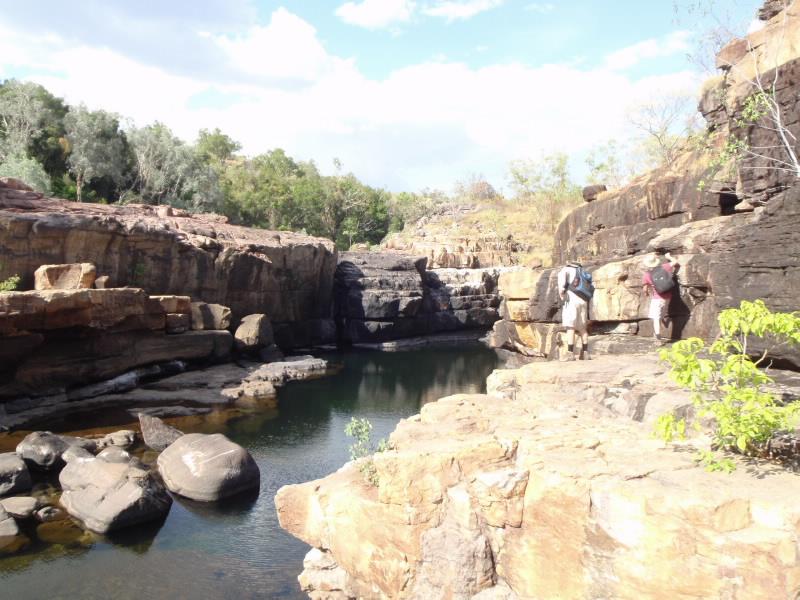

Published on the 13th April 2015 by ANSTO Staff
Environmental researchers Dr Toshi Fujioka and Dr David Fink from the ICCAS project, together with Dr Hendrick May, an ARC DECRA Fellow from University of Wollongong, carried out fieldwork in Kakadu and Litchfield National Parks in northern Australia’s Top End last October.
The aim of the project is to investigate over what lengths of time and when in the past did the magnificent rivers in the Top End sculpt the extensive staircase of cascading waterfalls and plunge pools, that are so ubiquitous to northern Australia.
The researchers are experts in using a novel radioisotope dating technique called cosmogenic exposure dating and samples are measured on the world-class ANTARES accelerator mass spectrometry accelerator.
The project is also an extension of Drs Fink and Fujioka’s successful previous study in the Kimberley.
One site, Koolpin Gorge (or "Jarrangbarnmi" as it is called in the local Aboriginal language) is in the upper part of the South Alligator River in the Kakadu National Park, located at the south western edge of the Arhnem Land plateau. The area is a sacred site for the indigenous Aboriginal people of the region.
Prior to any field work being conducted it is mandatory to obtain the correct permits; the researchers also hosted one of the local Aboriginal members to accompany them as a local guide. The late October weather was, as per usual, rather oppressive and they reported that by nine in the morning the air temperature was a balmy 40° to 45 C.
With >80% humidity, field work was physically challenging, -but the waterholes provided much desired relief at the end of the day’s work.
The outcome of the project will provide new insights into the pace and scale of long-term landscape evolution of northern Australian and also provide the connection between past rainfall magnitude and the sculpting of the spectacular waterfalls, which are ubiquitous in northern Australia.
